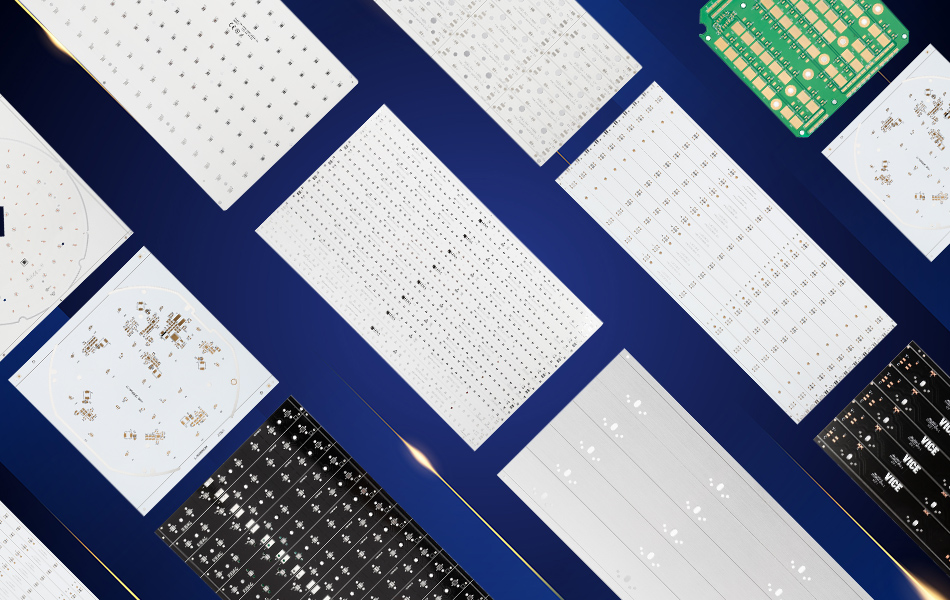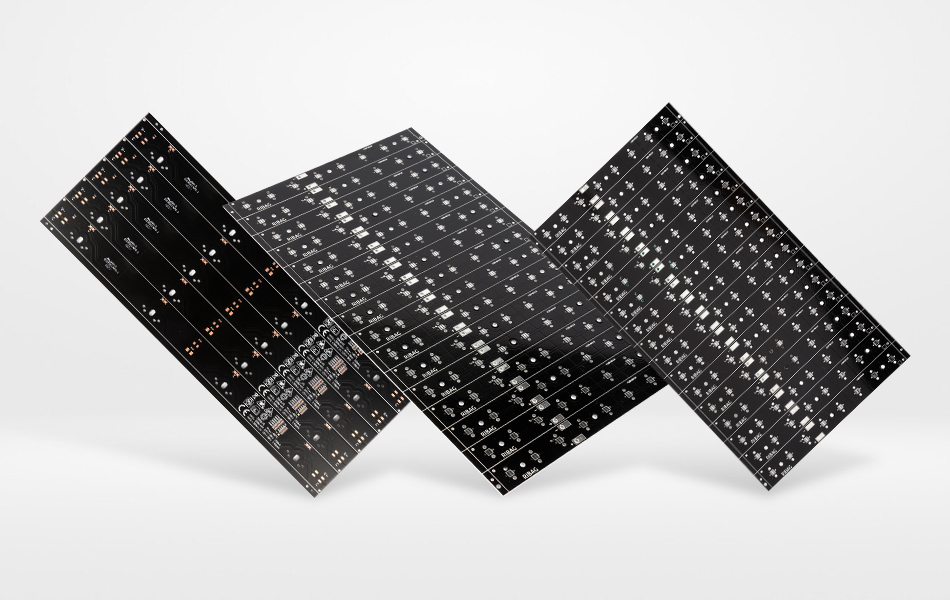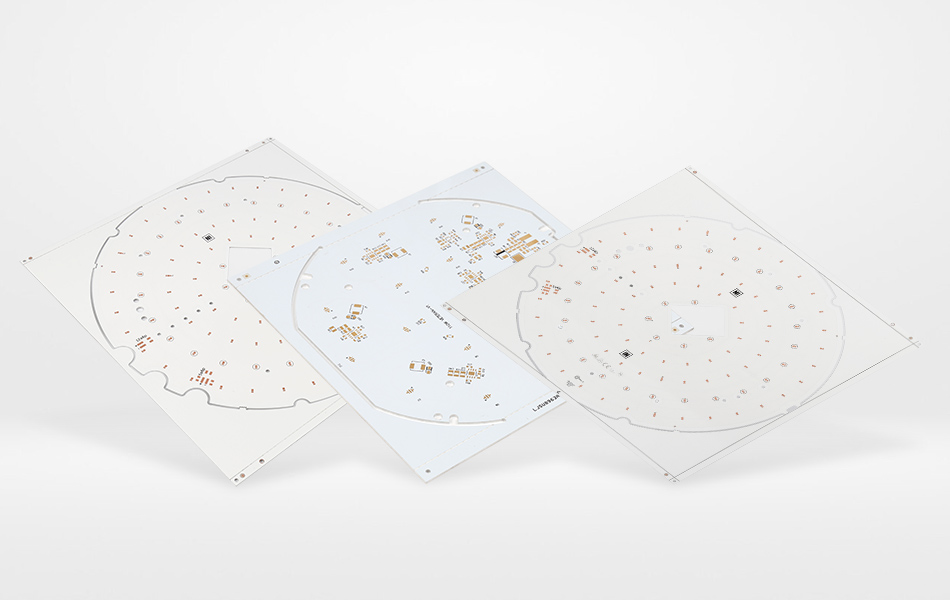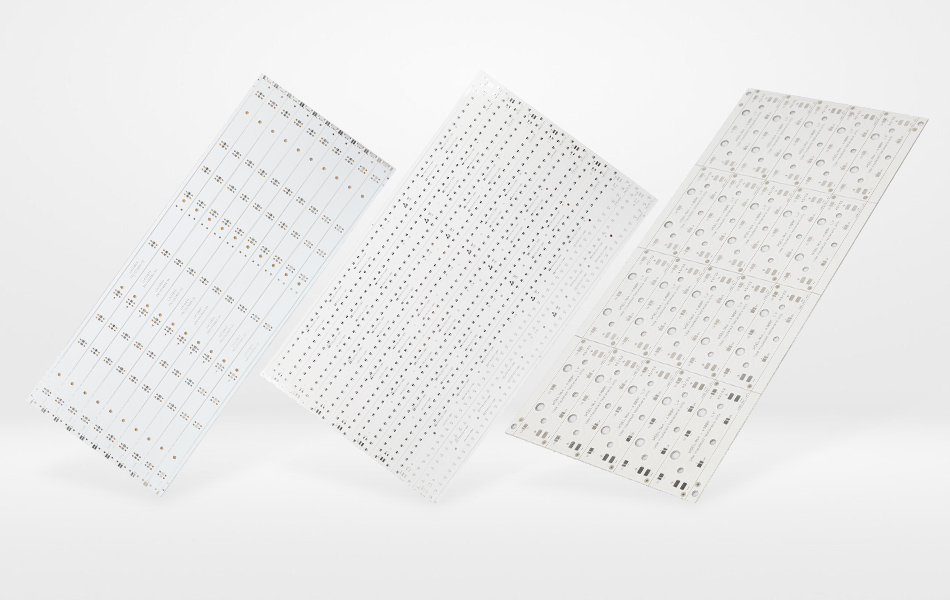-
- PCB TYPE
- PRINTED CIRCUIT BOARD PROTOTYPE ALUMINUM PRINTED CIRCUIT BOARD R&F PCB FPC HIGH FREQUENCY PCB HIGH-TG PCB HEAVY COPPER PCB HDI PCB PCB FOR LIGHTING METAL CORE PCB
time:Jun 28. 2025, 09:55:19
In the global landscape of electronics manufacturing, regulatory compliance has become a cornerstone of sustainable and responsible production. The Registration, Evaluation, Authorization, and Restriction of Chemicals (REACH) regulation, enforced by the European Union, has had a profound impact on material selection and manufacturing processes across industries. This article delves into the realm of REACH compliant aluminum printed circuit boards (PCBs), exploring the implications of REACH regulations, material considerations, manufacturing adjustments, industry applications, and the broader impact on the electronics sector. By understanding the intricacies of REACH compliance, manufacturers can navigate regulatory requirements while maintaining the high performance and reliability of aluminum PCBs.
Understanding REACH Regulations and Their Impact
Overview of REACH Legislation
Enacted by the EU in 2007, REACH aims to protect human health and the environment from the risks posed by chemicals. The regulation applies to all industries that manufacture or import chemicals and products containing chemicals, including electronics. Key aspects of REACH relevant to aluminum PCBs include:
Registration: Manufacturers must register chemicals produced or imported in quantities exceeding 1 ton per year.
Evaluation: The European Chemicals Agency (ECHA) evaluates registered chemicals to assess their safety.
Authorization: Certain hazardous chemicals require specific authorization for use.
Restriction: Prohibits the use of chemicals that pose unacceptable risks.
Key Restricted Substances for Aluminum PCBs
REACH restricts numerous substances commonly found in traditional PCB materials, including:
Halogenated Flame Retardants: Such as polybrominated diphenyl ethers (PBDEs) and tetrabromobisphenol A (TBBPA).
Heavy Metals: Including lead, cadmium, and mercury, which may be present in solder or surface finishes.
Phthalates: Used as plasticizers in some polymer materials.
Alkylphenols: Found in certain cleaning agents and coatings.
Compliance Challenges for Aluminum PCB Manufacturers
Complying with REACH introduces several challenges:
Material Traceability: Ensuring all components and raw materials are free from restricted substances.
Formulation Reformulation: Redesigning dielectric layers, solder masks, and surface finishes to avoid restricted chemicals.
Testing and Documentation: Implementing rigorous testing protocols and maintaining comprehensive records for regulatory audits.
Global Supply Chain Management: Coordinating with suppliers worldwide to ensure consistent compliance.

Material Selection for REACH Compliant Aluminum PCBs
REACH - Compliant Aluminum Substrates
Aluminum itself is not a restricted substance under REACH, but manufacturers must ensure:
Purity and Alloy Composition: Avoiding alloys that contain restricted elements like cadmium (sometimes used in aluminum alloys for corrosion resistance).
Surface Treatments: Using chromate - free conversion coatings (e.g., zirconium or titanium - based) instead of hexavalent chromium, which is restricted under REACH.
Recycling Practices: Ensuring recycled aluminum used in substrates does not introduce contaminants.
REACH - Compliant Dielectric Layers
Dielectric materials in REACH compliant aluminum PCBs must:
Eliminate Halogenated Flame Retardants: Replacing them with alternatives like metal hydroxides, phosphorus - based compounds, or silicon - based resins.
Avoid Restricted Plasticizers: Such as phthalates, by using phthalate - free polymers.
Meet Thermal and Electrical Specifications: Maintaining performance equivalent to traditional dielectrics through advanced formulations, such as ceramic - filled epoxy systems.
REACH - Compliant Surface Finishes and Coatings
Critical surface treatment considerations include:
Lead - Free Solder Finishes: Using tin - based alloys instead of lead - containing solders.
Halogen - Free Solder Masks: Formulated with acrylic or epoxy resins and inorganic flame retardants.
Electroless Nickel Immersion Gold (ENIG): Ensuring plating baths are free from restricted substances like lead and cadmium.
Organic Solderability Preservatives (OSP): Utilizing water - based, halogen - free OSP solutions.
REACH - Compliant Adhesives and Bonding Materials
Adhesives used in laminating layers must:
Avoid Restricted Chemicals: Such as formaldehyde - releasing agents and certain curing agents.
Meet Bond Strength Requirements: Maintaining reliable adhesion between the aluminum substrate, dielectric layer, and copper traces.

Manufacturing Processes for REACH Compliant Aluminum PCBs
Material Sourcing and Traceability
Manufacturers must:
Work with REACH - Compliant Suppliers: Ensuring all raw materials come with appropriate safety data sheets (SDS) and compliance certificates.
Implement Material Tracking Systems: To trace the origin and composition of each component through the supply chain.
Adjustments to PCB Fabrication
Lamination Processes
Halogen - Free Lamination Materials: Using prepregs and adhesives that comply with REACH standards.
Temperature and Pressure Optimization: Adjusting lamination parameters to suit the curing characteristics of REACH - compliant dielectric materials.
Circuit Patterning and Etching
Halogen - Free Photoresists: Employing chemical amplification resists that avoid restricted solvents.
Environmentally Friendly Etchants: Using ammonium persulfate or ferric chloride instead of halogen - containing etching solutions.
Drilling and Vias
Diamond - Coated Tools: For precision drilling in aluminum substrates, reducing burr formation without halogenated coolants.
Water - Based Coolants: Replacing halogenated or oil - based coolants to meet REACH environmental standards.
Quality Control and Compliance Testing
Chemical Content Analysis
X - Ray Fluorescence (XRF) Testing: To detect heavy metals in raw materials and finished PCBs.
Ion Chromatography: For analyzing halogen content in dielectric layers and solder masks.
Gas Chromatography - Mass Spectrometry (GC - MS): To identify trace amounts of restricted organic compounds.
Performance Validation
Thermal Testing: Ensuring REACH - compliant materials maintain thermal conductivity and stability.
Electrical Testing: Verifying insulation resistance, dielectric breakdown voltage, and signal integrity.
Mechanical Testing: Assessing flexural strength, impact resistance, and solder joint reliability.

Industry Applications of REACH Compliant Aluminum PCBs
Consumer Electronics
Sustainable Mobile Devices
REACH compliant aluminum PCBs are essential for:
Eco - Conscious Branding: Meeting consumer demand for environmentally friendly electronics.
Global Market Access: Ensuring compliance with EU and other regional regulations for products sold worldwide.
Thermal Management in High - Power Devices: Cooling advanced processors and 5G components without hazardous materials.
Home Appliances
In smart home and energy - efficient appliances, these PCBs:
Reduce Environmental Impact: Throughout the product lifecycle, from manufacturing to disposal.
Withstand Harsh Operating Conditions: In kitchen appliances and outdoor devices.
Support IoT Integration: Enabling connected features while adhering to global safety standards.
Automotive Electronics
Electric Vehicles (EVs)
REACH compliant aluminum PCBs are critical for:
Battery Management Systems (BMS): Ensuring safe and efficient battery operation without restricted substances.
Power Inverters: Handling high - voltage applications with reliable thermal management.
Charging Systems: Meeting strict automotive industry environmental standards.
Traditional Vehicle Electronics
In conventional vehicles, they are used in:
Engine Control Units (ECUs): Withstanding high temperatures and vibrations.
Advanced Driver - Assistance Systems (ADAS): Requiring reliable performance and regulatory compliance.
Medical Devices
Healthcare Equipment
REACH compliant PCBs offer:
Biocompatibility: Reducing the risk of toxic emissions in clinical environments.
Sterilization Compatibility: Withstanding autoclaving and chemical disinfection processes.
Reliability in Critical Applications: Such as life - support systems and diagnostic equipment.
Industrial and Aerospace
Industrial Automation
In industrial settings, these PCBs are used in:
Robotics and Control Systems: Withstanding harsh industrial environments.
Renewable Energy Infrastructure: Solar inverters and wind turbine control systems.
Hazardous Environment Equipment: Where compliance with safety and environmental regulations is paramount.
Aerospace and Defense
In avionics and defense applications, they:
Meet Stringent Environmental Standards: For low - outgassing in satellite and aircraft systems.
Ensure Reliability in Extreme Conditions: Including temperature fluctuations and radiation exposure.
Support Sustainable Aerospace Initiatives: Aligning with global efforts to reduce environmental impact.

Regulatory Landscape and Compliance Strategies
Global Harmonization of Regulations
While REACH originated in the EU, its influence has spread globally, with other regions adopting similar regulations:
China’s RoHS: Restricting hazardous substances in electronic products.
California’s Proposition 65: Warning requirements for chemicals known to cause cancer or reproductive harm.
Japan’s J - MOSS: Guidelines for reducing the environmental impact of electronic devices.
Compliance Strategies for Manufacturers
Proactive Material Screening
Early - Stage Component Analysis: Testing raw materials before production to identify potential compliance issues.
Supplier Certification Programs: Ensuring all suppliers meet REACH standards and provide necessary documentation.
Process Optimization for Compliance
Closed - Loop Manufacturing: Minimizing waste and reusing materials to reduce environmental impact.
Digital Traceability Systems: Using blockchain or similar technologies to track materials through the supply chain.
Regulatory Monitoring and Adaptation
Staying Abreast of Regulatory Updates: As REACH continues to evolve, with new substances added to the restricted list.
Flexible Manufacturing Processes: Allowing quick adaptation to changing regulatory requirements.

Future Trends in REACH Compliant Aluminum PCB Technology
Advanced Material Innovations
Biodegradable and Recyclable Polymers: Developing dielectric materials that break down safely or can be easily recycled.
Nano - Composite Materials: Combining nanoscale fillers with REACH - compliant resins to enhance performance.
Graphene - Enhanced Thermal Interface Materials: Improving heat dissipation without restricted substances.
Manufacturing Process Improvements
Additive Manufacturing (3D Printing): For more precise and waste - efficient production of REACH compliant PCBs.
Laser - Based Fabrication Techniques: Enabling finer traces and higher density with minimal chemical usage.
Automated Compliance Testing: Using AI and machine learning to streamline chemical analysis and quality control.
Circular Economy Initiatives
Design for Disassembly (DfD): Creating PCBs that can be easily broken down for material recovery.
Extended Producer Responsibility (EPR): Taking responsibility for the disposal and recycling of products.
Second - Life Applications: Repurposing REACH compliant PCBs in lower - power devices to extend their lifecycle.
Integration with Emerging Technologies
5G and IoT Devices: Requiring high - frequency, low - loss PCBs that meet strict environmental standards.
Wearable Technology: Demanding flexible, REACH compliant aluminum PCBs for health monitoring and consumer electronics.
Artificial Intelligence and Edge Computing: Enabling powerful, energy - efficient systems with sustainable materials.
Challenges and Mitigation Strategies
Cost Implications
Initial Investment: In REACH compliant materials and manufacturing processes can be higher.
Economies of Scale: As demand for REACH compliant PCBs grows, costs are expected to decrease.
Long - Term Savings: Reduced risk of regulatory fines and improved brand reputation offset initial costs.
Technical Performance Trade - Offs
Balancing Compliance and Performance: Ensuring REACH compliant materials meet the same high standards as traditional materials.
Research and Development: Investing in R&D to develop new formulations that match or exceed the performance of non - compliant materials.
Global Supply Chain Complexity
Diverse Regulatory Requirements: Coordinating compliance across different regions with varying regulations.
Supplier Collaboration: Working closely with suppliers to ensure consistent compliance throughout the supply chain.
Conclusion
REACH compliant aluminum PCBs represent a necessary evolution in electronics manufacturing, balancing technological advancement with environmental responsibility. As global regulations continue to tighten and consumer awareness of sustainability grows, these PCBs are set to become the industry standard. By embracing REACH compliance, manufacturers not only meet regulatory requirements but also position themselves at the forefront of sustainable innovation. The challenges of material reformulation, process adjustment, and supply chain management are outweighed by the opportunities for market expansion, brand enhancement, and contribution to a more sustainable future. REACH compliant aluminum PCBs are not just a regulatory necessity but a strategic investment in the future of electronics manufacturing.

Got project ready to assembly? Contact us: info@apollopcb.com



We're not around but we still want to hear from you! Leave us a note:

Leave Message to APOLLOPCB
